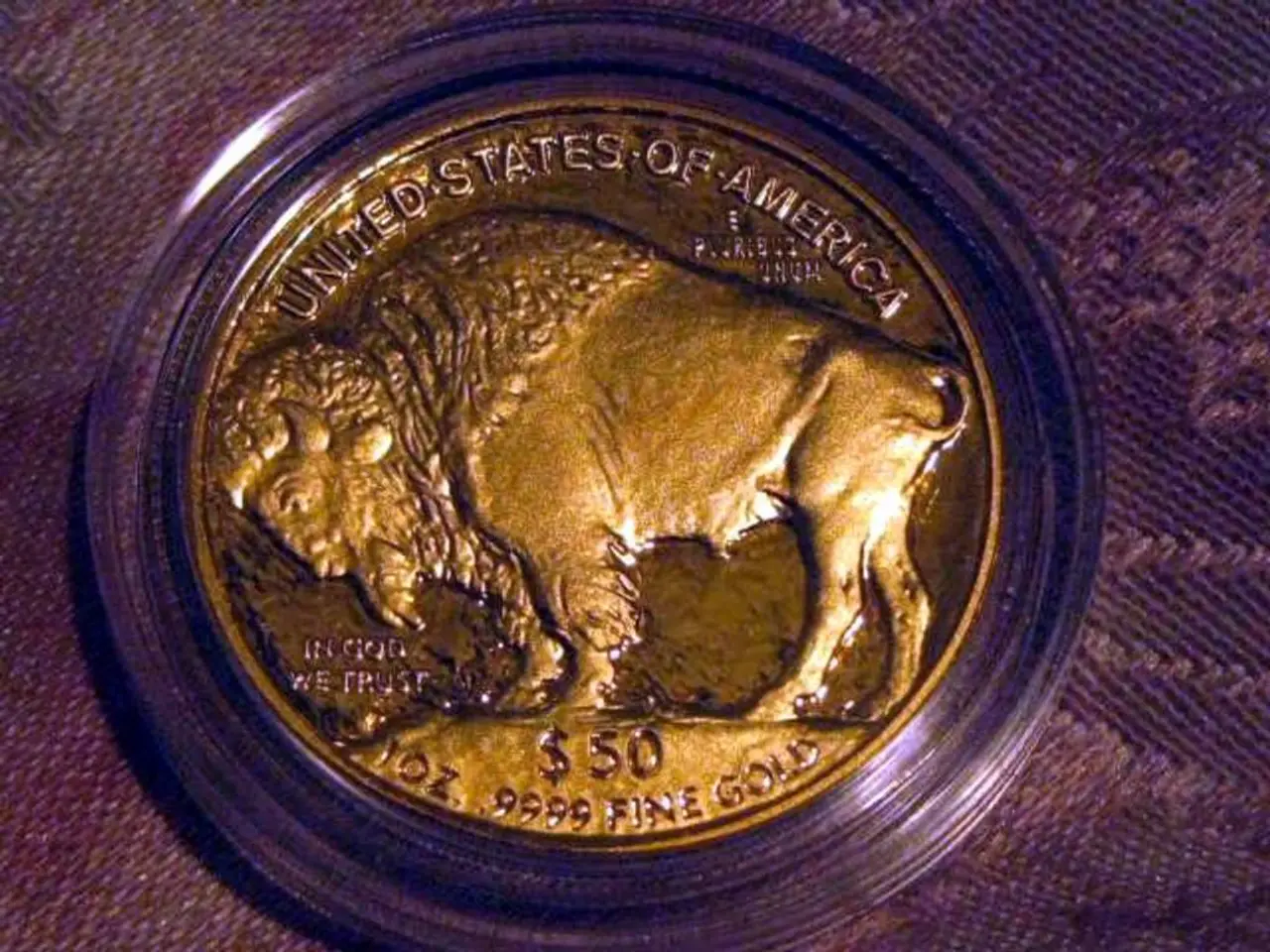Safe-haven assets such as Bitcoin, gold, and Swiss franc compete for investor preference as the US dollar weakens.
In a recent development, gold, Bitcoin, and the Swiss franc have all seen a significant surge in their prices, as investors seek refuge in safe-haven assets.
Goldman Sachs analysts have made a bold prediction, stating that the gold price could reach an unprecedented $5,000. This prediction comes as the gold price has already reached a record high, with ETFs adding substantial inflows in the past few months. Notably, China's central bank has been buying gold for eleven consecutive months, increasing its holdings to $74 million troy ounces.
The Swiss franc, too, has experienced a surge, gaining 13% against the U.S. dollar. This increase is largely due to the franc's low-yield, stability, neutrality, and low public debt, making it an attractive safe-haven asset in times of economic uncertainty. The Swiss franc has become increasingly popular, as it offers a stable alternative to other currencies amidst worsening trade relations and economic instability.
Meanwhile, Bitcoin has also seen a rise in its price, although it remains to be seen if it will reach the astronomical heights predicted for gold. The institution planning to stimulate Solana prices through a Nasdaq listing is the Grayscale Investments, indicating a growing interest in cryptocurrencies as a potential safe-haven asset.
Interestingly, geopolitical shifts are also influencing the market. Reports suggest that India is aligning itself with China due to the Trump administration's tariffs, potentially further fuelling the demand for safe-haven assets.
The U.S. dollar index, on the other hand, has decreased from $110 in January to $97.73 today. This decline is attributed to the worsening trade relations with other countries, which has led to a loss of confidence in the U.S. dollar as a global reserve currency.
As we move forward, it will be interesting to see how these trends develop and how safe-haven assets continue to play a role in the global economy.







